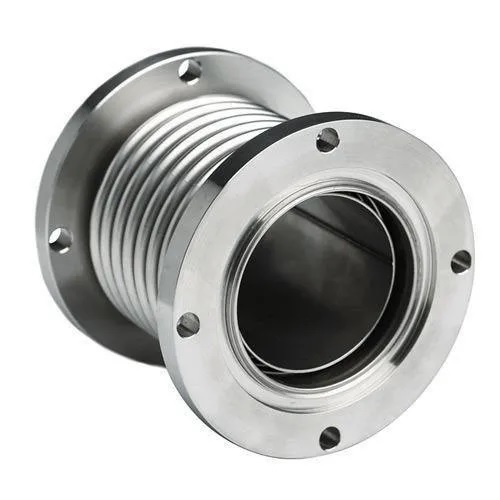Expansion joint bellows is a spindle spool wheel type of flexible parts that is used in chemical industries, and pipeline systems that are essential to sustain thermal expansion, contraction and continuous vibration etc. Stainless steel materials can be employed in making them with convoluted bellows so that movement can be ensured without compromising the integrity of the system. Most application in industries such as oil and gas, chemical processing, power plants, and HVAC involve the use of expansion joint bellows. Their function is essential to shield the pipes and equipment from possible damages resulting from temperature shifts or mechanical strain. The fundamental benefits of expansion joint bellows are wear and tear minimization, leakage prevention, risk reduction of structural damages, and increase in the life expectancy of the systems. They are essential for keeping systems that experience thermal cycling or motion safe and efficient with no stoppage in operation and saving maintenance costs.
Manufacturing Expansion Joint Bellows: Materials, Process & Quality Control
Expansion joint bellows are manufactured using an efficient process of precise forming of elastic bellows from quality raw material such as stainless steel, alloy, or any other resistance metal. It begins typically with the selection of appropriate materials that can endure great pressure, temperature fluctuation, and corrosive settings. The metal sheets are then formed into convoluted bellows through a number of forming, welding, and machining processes, which may often be done with the use of specialized equipment, such as hydraulic presses, CNC machines, and welding stations. Rigorous quality control measures must be necessary to ensure optimal performance and durability. In these measures, the testing of dimensional accuracy for pressure resistance, flexibility, and integrity of welds must be checked. Other material properties such as tensile strength, corrosion resistance, and fatigue are also subjected to industrial standards so that expansion joint bellows can accommodate expansion, contraction, and vibration in various applications.
Types of Expansion joint bellows and uses
There are different types of Expansion joint bellows, every one of which is designed specifically to meet the needs of its application. Axial expansion joints are intended to absorb movement along the axis of the pipe and, therefore, are perfect for use in straight pipelines where axial displacement occurs because of thermal expansion. Lateral expansion joints accommodate lateral movement, often used in systems where pipes may shift sideways due to external forces or thermal changes. Angular expansion joints are designed to absorb angular movement, which is commonly utilized in systems where components are misplaced or where angular displacement is supposed to occur. Universal expansion joints combine axial, lateral, and angular movement ability and offer flexibility for a more complex piping system. Each type is made from materials like stainless steel, bronze, or alloys and finds its application in oil and gas, chemical processing, power plants, and in HVAC systems for absorption of thermal expansion, reduction of vibration, and avoidance of system damage through mechanical stress.
Conclusion:
Expansion joint bellows manufacturer play an essential role in maintaining piping systems’ integrity and functionality. Their flexible design makes them essential in industries such as oil and gas, chemical processing, and HVAC systems, where they prevent damage, minimize wear and tear, and improve system longevity. By using quality raw materials and advanced machinery, these bellows are made capable of resisting the most stern conditions by a precise manufacturing process. With different types based on their applications, expansion joint bellows ensure reliable and cost-effective solutions with smooth operation in complex systems – hence becoming an indispensable part for modern infrastructure.



